Arcane magic represents the most important discipline available to us in which people across all the world can come together to share our notes and experiences in order to construct a vision of how this system functions that is coherent and precise and replicable and also probably in some way, fundamentally wrong.
Archmagus Laewaes I
Look I just want to tell you about a cool adventure site and backstory hook from Cobrin’Seil that’s about something I care about a lot recently, which is a university system in-setting. It just takes a bit of a walk to get there because it involves understanding Arcane magic and how it differs from Divine magic, Primal Magic, and Psionics in the setting.
Arcane magic is a magical force that permeates most of the world of Cobrin’Seil. It’s best considered the way that you may think of radio waves or background radiation. Everywhere has it, and everyone can interface with it if they have the right technology on hand. For some that technology is wands and scrolls, but for others that technology can be mental, memorised and prepared, or potions and poultices. It is the absolutely accessible, democratic form of magic; no relationships necessary (unless you’re a warlock) and not even any innate talent. Arcane magic is largely, predictable and reliable, and a lot of what goes into its study is the management of safety protocols and ways to make it reliably reusable.
Some quick terminology:
- Arcanist refers to any person using Arcane Magic as a multi-purpose field of study.
- Mage is a loose term used to refer to practitioners of magic who seem to have a similar aesthetic, usually involving standing distant from things and casting magic with gestures and words. Mage is the typical term used to refer to an obvious spellcaster, but it’s a wobbly term; some people wouldn’t consider Artificers or Swordmages as a type of mage, and some would consider Clerics or Invokers as mages too. It’s not an exact term.
- Magewright refers to a person using rituals for some work product.
These terms get a little confused together, of course. Magewrights are people who, initially, took advantage of the reliability of arcane magic to do things that you’d normally summarise as a ‘a job.’ This reliability has led to the in-world practice of people who have enough time to dedicate to broadening their skillbase to have some form of magic they do in their workplace, often by some single specialist whose job it is to do it. Many laborers know a single ritual, simply executed, and sometimes do it hundreds of times over the course of their career. A bricklayer may use a ritual to make a huge number of bricks a uniform shape. A bartender may have a ritual useful for preventing unconscious people from drowning or being ill in their sleep. A butcher who knows exactly the spells for long-term preservation of meat, cleaning all surfaces, and patching up a short term injury is a butcher who can do more work more easily. This is magewright training, and it’s not uncommon for people in these disciplines to train an apprentice in them. If you work at the cobbler’s, you’ll eventually learn the ritual they use to straighten all the nails to save money over time.
Thing is, not all rituals are arcane? I don’t know if I need to say that here, but just because arcane magic is the reliable, globally accessible and consistently predictable, it’s the kind of thing that people write down in libraries and textbooks. Most industrial applications of magic tend to use arcane magic, because that’s the kind of magic that’s the most predictable. This means that magewrights aren’t necessarily arcanists. There are all kinds of magewrights who are using a different source of magic. A lot of magewrights are arcanists, but the two terms are non-overlapping.
This idea of unified arcane study theories is an idea that comes from what’s known as the Visible Colleges. The Visible Colleges refers to the idea of Arcane research as a public good handled by researchers willing to share research and publish it to one another. Visible Colleges share notes on magical research but also certify to one another the skills and techniques of graduates – if you have a qualification from one member of the Colleges, other Colleges will recognise it, meaning the skills of any given mage travel really well. Countries like having skilled mages within their borders, so encouraging people to travel to other members of the Visible Colleges, build their skills and come back is an acceptable tradeoff to help resources even out. It’s a university system, but because the Visible Colleges have to encompass a lot of different ways different experts in different spaces have engaged with Arcane research, there’s a sort of vagueness about what they are, and what it means to be a mage, included in the Visible Colleges.
Part of why magewrights consider themselves outside of being mages is because of the common perception of what a mage is, which, typically, means a Visente wizard; an intellectual with access to immense magical power and a superiority complex, usually in some kind of long, flowing robe that doesn’t accommodate travel well and often with a big fancy staff that’s obviously expensive. Normally, Dal Raeda and the Eresh Protectorate would be the representatives of this kind of thing in the common cultural consciousness, but the problem is both nations’ connections to the Visible Colleges are varied and complicated.
Instead, Visente has three large, successful, prominently competitive Magic Universities, and they also publish media about those things, the typical assumptions most people have about what Magic Universities are like, basically, Visente’s. Complicating this is that Visente’s universities have some very specific idiosyncracies that can’t happen in other locations. Visente universities forbid Sorcerers; most other universities don’t. Visente universities are relied upon for mass teleportation of goods; most other universities use the King’s Highway. Visente universities are awash in party culture because they’re connected to the upper class of the city’s elite. Most other universities are positively pedestrian. In fact, so powerful is the Visente University’s image across Bidestra that there are people who have attended their own members of the Visible Colleges who don’t realise that they’re part of the same system. Several people live in towns built around some form of Magic University that don’t realise the wizard tower in their own town counts as the same kind of thing and that education they want is more attainable than it would be if they could save the money to travel to Visente.
To this end there is a push amongst members of the Visible Colleges to ensure that where possible, the mages doing study and teaching apprentices, of all varieties, have some form of public facing presentation and some way to ensure that they are recognised for what they do. Regular magical shows, public recruitment events, student exchanges, whatever they choose, but have a public identity. This is one of the reasons why small towns and remote locations where an old, powerful spellcaster owns a retirement home and laboratory, the wizard makes a point of visiting the rest of the town while being extremely wizard-looking. It’s important to have a public persona. It’s also why some other members of the Visible Colleges maintain and present an extremely obvious public presence in other ways.
Members like Laewaes Dramaturgy.
Laewaes is a Eresh technically-a-city. Surrounded on three sides by dense evergreen forests, which itself spills down a mountainside of a nearby mountain range, it has a lovely crisp temperature most of the year, with mild summers and snowy winters. It’s not very dense as a population centre and it’s not particularly heavy on industry; it imports a lot of food and material goods, but it just doesn’t have that much room for people to live, and a lot of its residential space is dedicated to short-term lodging – not just students for a few years, but also because Laewaes is a place people visit for holidays. This is because Laewaes is a very nice place, with parks, food, art galleries and museums but also because Laewaes is a place renowned for having nearly constant theatrical performances of all sorts of varying scales of cost.
Laewaes is a place where a lot of the laborers doing jobs in the towns are short-term residents who show up to do a bit of work to finance visiting the place and then moving on, with a little experience and some of the theatre. Laewaes is also a place that is built around Laewaes Dramaturgy, the sprawling campus of buildings and research centres that produces a number of arcanists every year – whether short-term magewrights or the more long-term disciplines.
This campus is where all the theatre comes from.
If you attend Laewaes Dramaturgy you are doing it on one of two possible education pathways. One, you are there to be a magewright and your class takes six months. You’re showing up, you are doing three or four days a week, you are drilling on a tiny number of spells, you learn almost no theory and you’re going to walk out of the place knowing how to do something and with no application beyond what you were taught in that environment.
The other pathway is as a form of arcanist, usually considered in lights of one of the major discipline groupings. There are those who are interested in arcane magic’s interaction in fluids and materials, known commonly as artificers, there are those interested in arcane magic’s application to physical interfaces within the body, known as sword mages, there are those interested in arcane magic’s expression through innate access, known as sorcerers, and then finally, those interested in arcane magic’s expression through controlled expression of linguistics, known as wizards.
There are two asterisks here, where we look at warlocks and bards. We’ll get to those.
Thing is, you show up to the college and apply for one of the Arcane study tracks, one of the long-term, make-me-a-mage kind of disciplines. And your first year is composed of literally zero applied magic studies. No spellcasting. In the context of your studies, you will neither be taught how to nor expected to demonstrate any magical skill or abilty at all. Half your workload will be non-stop magical theory, often very dense, with a strong focus on safeties, protections and margins of error and safety.
The other half of your studies, no joke, is theatre.
The Dramaturgy courses are varied in their application but if you show up to study magic, you are also doing a lot of theatre first. You might be doing dance for your cardio, you might be doing stage fighting to prepare you for proper fighting, you might be doing prop building to ensure you’re studying materials and measuring twice before you cut once, and if you’re doing anything at all for the wizard path, you are absolutely doing oratory and enunciation.
The theory underpinning the Dramaturgy was that magic is dangerous and volatile, and therefore, before you ever engage with it, you need a way to safely play with the same skills. When this was practiced, it worked out, but importantly, it also put the students in a position to listen to and engage with one another on projects where there were practical outcomes. Students had to become directors, and communicators, and technical students not just of what they were doing but also to understand why other students were doing it. The resultant practice served well and also winnowed out students who took themselves very selfseriously. It’s a bit of a selection bias: Graduates of the Dramaturge tend to be balanced and competent and have a flair for the dramatic and theatric, but also, the students most likely to turn out to be bastard mages of dark bastardry just don’t stick around.
The skills are transferable. Stage fighting lessons make you capable of taking a fall and get you familiar with the weight of a practice sword before you start with the real ones and real falls. Prop construction and makeup gets you thinking about what people’s skin can handle and how light and chemicals react to one another for effects. Audiences can help you focus on things that are inherent to the self and quelling anxiety such as a spellcaster may need in a moment of stress. And oratory teaches you about sound and its reach and most importantly, allows you a way to test being good at extremely specific linguistic constructions where the failure case is ‘a bad reaction from the audience’ and not ‘you summon the fireball inside one of your cheeks by mis-stating the spell.’
There was that asterisk, though, upstream. About the bards and warlocks.
See, there are a lot of bards in Laewaes. They tend to show up for the theatre culture. But the nature of a bard is that there may be a formal path to get accredited as once, but the number of bards with that accreditation are a small fraction of the whole. Bards, typically, ‘pick stuff up’ and augment other fields of study, and the nature of magic based on communal harmonies (music, oratory, performance) is something that a lot of people stumble into without needing a formal educator giving you insight. There are a lot of Bards coming from Laewaes, but it tends to be because they showed up for some general magic study, picked up a few credits and didn’t like the places it was pushing them. There’s a joke amongst alumni that ‘bard’ means ‘indecisive.’
The other thing is Warlocks. Thanks to the reputation of Visente barring sorcerers and Warlocks from their universities, there’s a common idea that Laewaes doesn’t allow Warlocks. But it does. It in fact involves Warlocks very thoroughly, and if you want to become a Warlock and arrive without a patron, there’s a course of theory that’s all about composing a good contract and negotiating new parameters.
Thing is, that’s if you come in and say ‘I want to be a Warlock.’
If you come in and say ‘I’m a wizard’ and turn out to be a Warlock, then you get bounced because you lied to the faculty. Warlock power is very tempting and it works on a different axis to most other kinds of arcane magic, and that means that it’s not uncommon for patrons to prey on students who are otherwise failing in their studies. You know, your grades are down, you’re concerned about failing, a patron appears in your bedroom and offers you a deal to give you power and handle the magic for you, you sign a contract without meaning to, and now you’re able to ace all your tests. It looks suspicious and it violates the promise of fairness the university is built around.
Broadly, the Dramaturgy wants people who are Warlocks to train their magic within the facility, for the same reason they want sorcerers to come too: Because they don’t want people experimenting with magic in circumstances that can get them or others hurt!
It’s not just magic students at Laewaes Dramaturgy of course. There are mundane studies building out of the existing curricula. You can transfer your magical studies to just be a full time dedicated theatre performer, and plenty of places have Laewaes tradition playwrights and actor troupes in their towns. Many of them are magewrights, too – nobody needs to know how you can clean a whole theatre in an hour, they just need to know the hourly rate for your turnover between shows, right?
But nobody forgets, when the graduation ceremonies happen and magical displays are brought out to emphasise and preserve memories, that Laewaes is a Magical University and that every one who studied there has some advantages from the study.
Nobody needs to be from Laewaes in particular. There’s no associated mechanical benefit yet. It’s just a place that has a vibe, that suggests a way your wizard may not necessarily look like a pointy hat and floppy robe. It’s a way to consider how archetypes are informed by what they’re supposed to do and how we can make that wider and more interesting.
It’s also probably a lot gayer than the conventional ‘wizard style.’
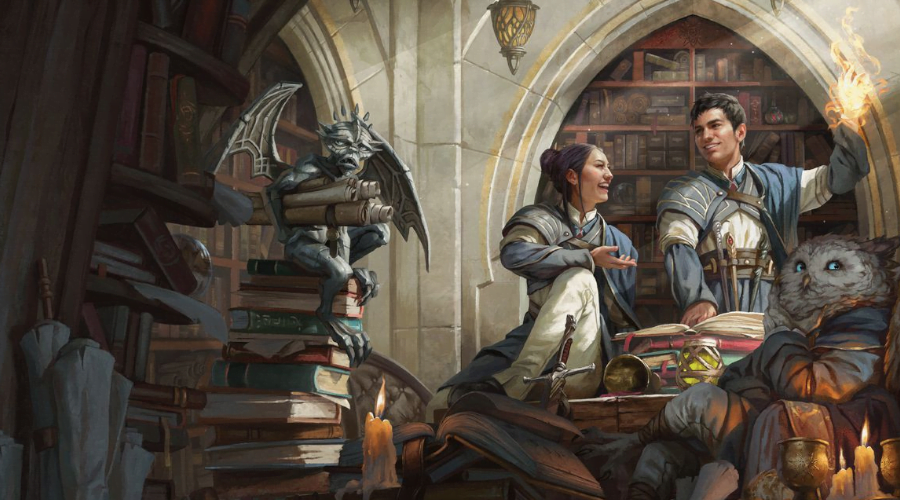
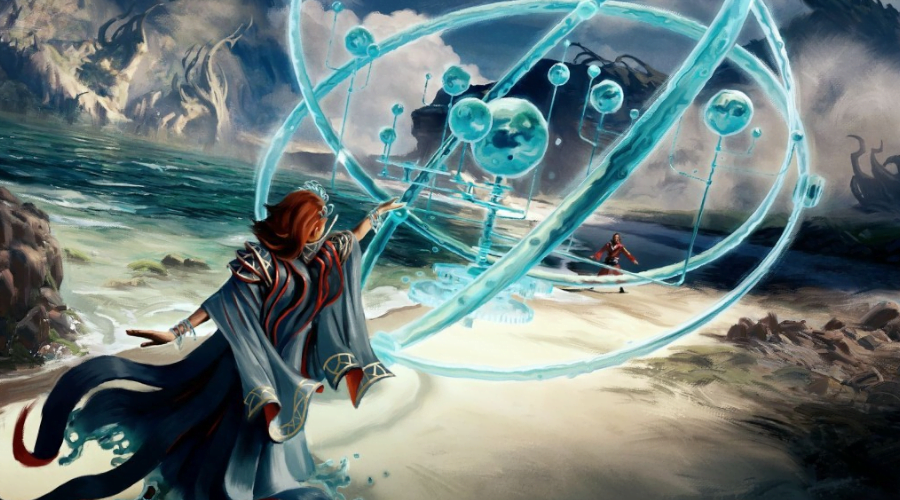
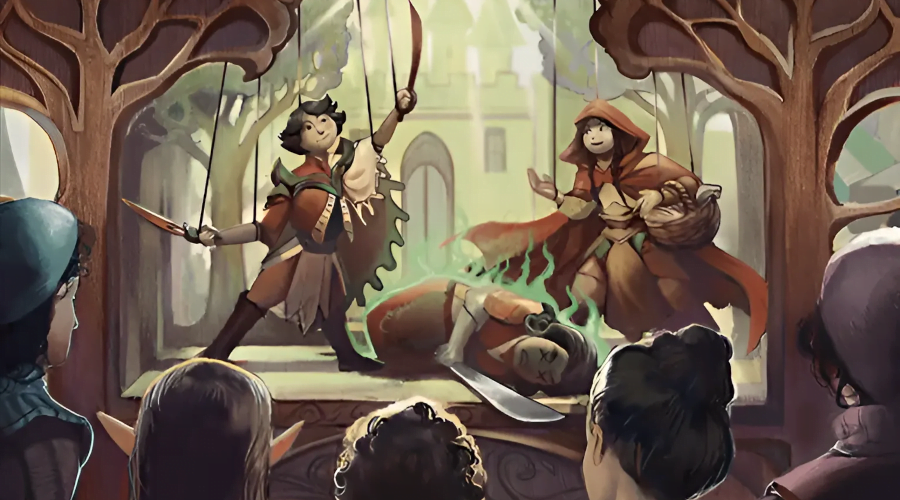
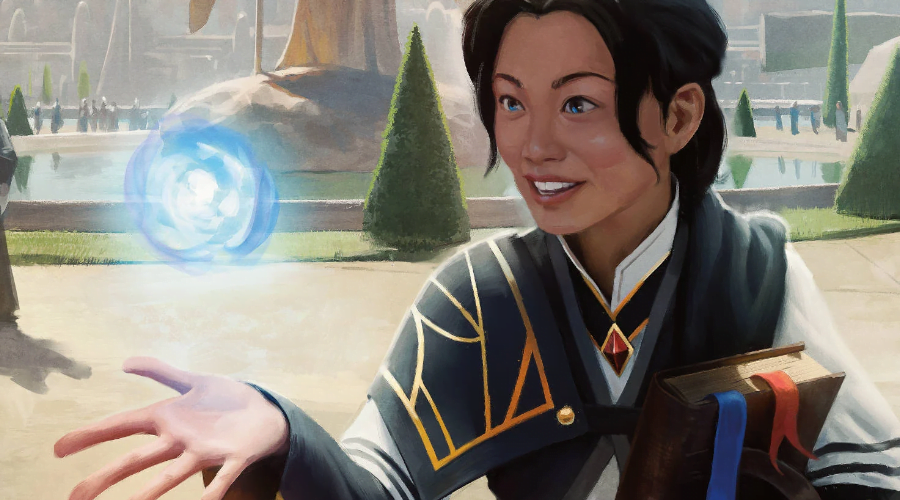
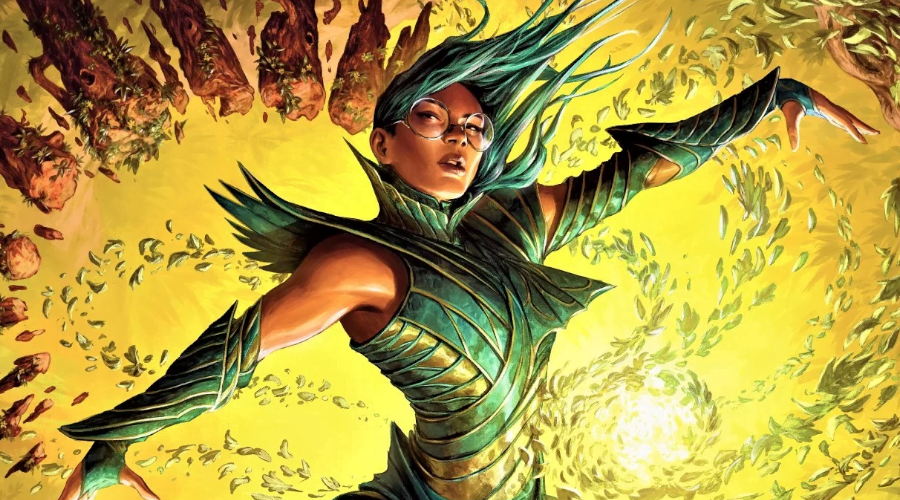
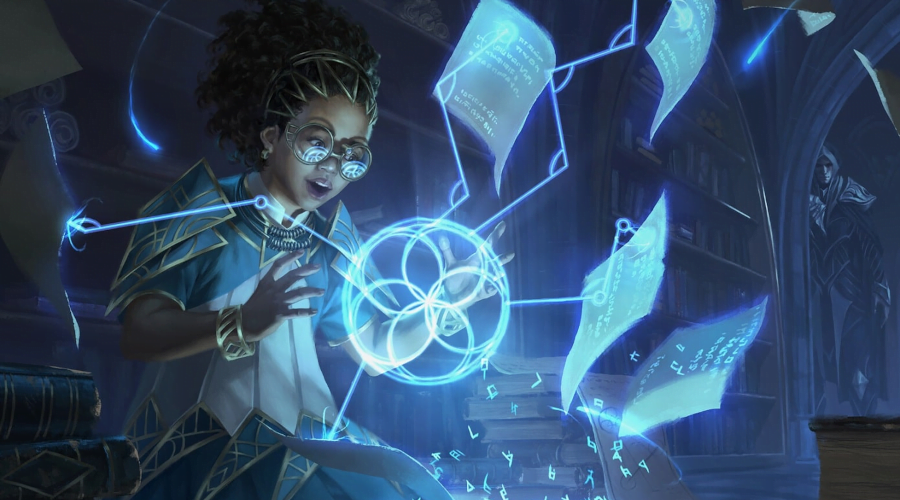
1 Comment
@updates I adore the concept of this, not only because Large Ham Flamboyant Wizard is the best kind of Wizard but because, like much of your world-building, it all makes a lot of sense.
How the Theatre Kid stage production element can help prepare for safer handling of arcane magic, and makes for better adventurers, or how there's the shorter more practical courses on single rituals for Magewrights
Like, it's weird to me that in most D&D settings (besides Eberron) there aren't more cases of Magewrights (not neccesarily the 3.5 class, but the concept), that rather than being a true Wizard or Cleric what you have (but just low level) you've got people who are largely in other professions and have picked up just barely enough magic to help with that job
Because even low level spells / rituals can have such a huge impact and quality of life improvement, so yeah, learning by some rote memorisation enough to literally just case that one ritual they need and knowing nothing of magical theory beyond that is just…reasonable? Practical?
The aside on Bards/Warlocks and the stereotypes associated with the colleges and how there's outreach to local settlements of looking "obviously wizardly" is also interesting and again, gives the feeling a world with rational actors – which is something I've oft felt absent in a lot of fantasy settings